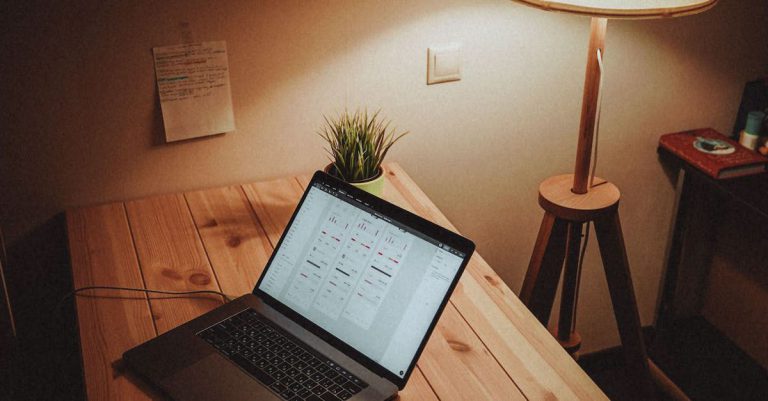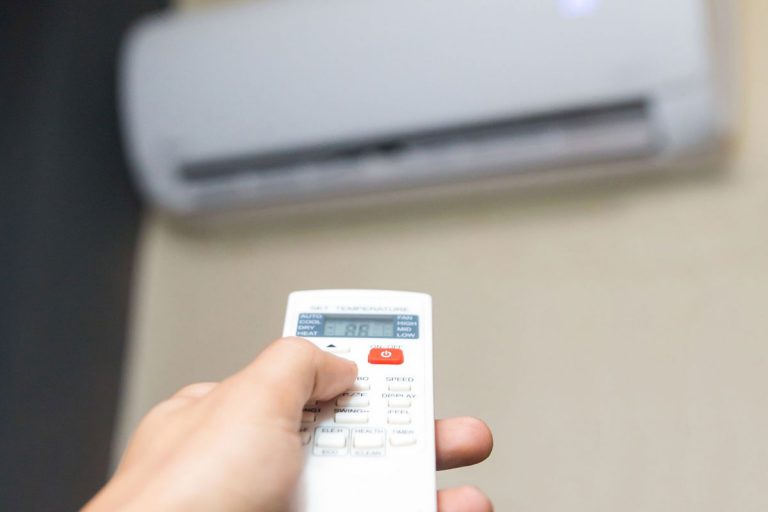In the age of connectivity, where Wi-Fi hotspots have become as ubiquitous as street lights, encountering a Wifi login page that doesn’t pop up can disrupt our flow. This may leave you wondering, ‘How can I force a Wifi login page to appear?’
If you’re short on time, here’s a quick answer to your question:
- Connect to the WiFi network.
- Open a web browser.
- Type in a non-secure (HTTP) website URL, such as “http://neverssl.com” in the address bar and press enter.
This should force the WiFi login page (captive portal) to appear. If not, try clearing your browser cache, disabling any VPN services, or disconnecting and reconnecting to the WiFi network.
In this comprehensive article, we’ll delve into this topic further and explore detailed methods to force a Wifi login page across various devices and platforms.
Understanding Wifi Login Pages
Wifi login pages are commonly encountered when connecting to public or private wifi networks. These pages serve as a gateway to gain access to the internet by requiring users to input certain credentials or agree to specific terms and conditions. In this section, we will explore why these login pages exist and highlight some common issues that users may face when encountering them.
Why Wifi Login Pages Exist
Wifi login pages serve several purposes for network administrators. One primary reason is to ensure that only authorized users can access the network. By requiring users to enter login credentials, such as a username and password, the network can verify their identity and grant access accordingly. This helps to protect the network from unauthorized usage and potential security breaches.
Another reason for wifi login pages is to enable the network provider to track usage and collect data. These pages often include terms and conditions that users must agree to before gaining access. By agreeing to these terms, users give permission for their browsing activity to be monitored and analyzed. This data can then be used for various purposes, such as improving network performance or delivering targeted advertisements.
Common Issues with Wifi Login Pages
While wifi login pages serve important functions, they can sometimes be frustrating for users. Here are some common issues that users may encounter:
- Page not loading: Sometimes, the login page may not load properly, preventing users from accessing the internet. This can be due to network issues or compatibility problems with the device being used.
- Unreliable connections: In some cases, the wifi signal may be weak or intermittent, causing login pages to repeatedly appear even after successful authentication. This can disrupt the user experience and make it difficult to stay connected.
- Complex authentication processes: Some wifi networks have elaborate authentication processes that require users to input multiple pieces of information or go through several steps before gaining access. This can be time-consuming and confusing for users.
- Privacy concerns: Wifi login pages often require users to agree to terms and conditions that involve sharing personal data or allowing tracking of their online activities. This can raise privacy concerns for some users who may be hesitant to provide such information.
How to Force a Wifi Login Page on Windows
Step-by-step Guide for Windows 10
The WiFi login page usually pops up when you are trying to connect to a public network. If it doesn’t, it could be because of your browser, network issues, or a firewall.
Method 1: Using a different browser
- Click the “Start” button on your Windows 10 desktop.
- Click the “All apps” button.
- Scroll down and click the browser you want to use (for instance, Google Chrome, Microsoft Edge, Mozilla Firefox, etc.).
- Type in a website that is not secure (http). You could try “neverssl.com“, as it is specifically designed to force captive portals (login pages) to appear.
Method 2: Clearing your browser cache
Sometimes, a full cache might prevent the login page from appearing.
- Open the browser you’ve been using.
- Look for the browser’s settings or options menu.
- Find the “Clear Browsing Data” or similar option.
- Make sure to clear your cache and cookies, and then close the browser.
- Try to connect to the WiFi again and see if the login page appears.
Method 3: Disable your firewall
If your firewall is preventing the login page from appearing, you can temporarily disable it. Remember to enable it again as soon as you’re connected for security.
- Type “Firewall” into the search box on your taskbar and click on “Windows Defender Firewall”.
- Click on “Turn Windows Defender Firewall on or off”.
- Choose “Turn off Windows Defender Firewall” for both private and public network settings.
- Click “OK” to save your changes.
Method 4: Releasing and renewing your IP address
If there’s a network issue preventing the login page from appearing, you might need to release and renew your IP address.
- Type “cmd” into the search box on your taskbar and click on “Command Prompt”.
- In the Command Prompt, type “ipconfig /release” and hit Enter. This will release your current IP address.
- Then type “ipconfig /renew” and hit Enter. This will request a new IP address.
- Try to connect to the WiFi again and see if the login page appears.
Remember, these methods are meant to help when the WiFi login page doesn’t appear automatically. If you’re having other connectivity issues, you may need to check with the network administrator or the place where the WiFi is provided.
How to Force a Wifi Login Page on macOS
For macOS users, forcing a wifi login page can be a bit different compared to other operating systems. However, with the right steps, you can easily access the login page and connect to the wifi network. Here is a step-by-step guide to help you through the process:
Step-by-step Guide for macOS:
- Open System Preferences and go to Sharing.
- Check the box next to Internet Sharing.
- Click the drop-down menu next to “Share your connection from” and select the WiFi interface you want to share from.
- Click Wi-Fi Options.
- Check the box next to “Internet Sharing: Share your connection from” and select the WiFi interface again.
- Check the box next to “Require authentication” and enter a password you want users to enter.
- Click OK.
- Click the Wi-Fi status menu in the top right corner of the screen and select the network you are sharing.
- Connect any devices you want to require the login page to this network.
- When someone tries to connect, they will be prompted for the password you set before gaining internet access.
- To disable the login page later, just uncheck “Require authentication” in the Wi-Fi Options section.
The key step is to enable authentication and set a password, which will force users to login before accessing the shared internet connection. I bolded step 6 since that is the most important one for enabling the login prompt.
Troubleshooting Tips for macOS Users:
- If the login page is not appearing, double check that you have enabled “Require authentication” in the Wi-Fi Options and set a password. This setting must be turned on to force the login prompt.
- Make sure the devices you want to require a login are connecting to the shared network name, not your original WiFi network. Connect to the network name you see when clicking the Wi-Fi icon in the menu bar.
- Try rebooting your Mac if you enabled Internet Sharing but still don’t see any shared network available to connect to. This may fix any issues with the feature not starting correctly.
- Disable any VPNs or proxies you may be using on your Mac, as these can sometimes interfere with Internet Sharing.
- If you set a very simple password, try changing it to a more complex one. Some devices may not prompt for a password if it is something basic like “password” or “1234”.
- Check your Mac’s firewall settings to ensure that it is not blocking connections to the shared network. The firewall may need adjustments to allow sharing.
- Make sure Internet Sharing is enabled on the correct WiFi interface if you have more than one. Internet Sharing will only work when enabled on the WiFi network you want to share.
- If the login prompt stops working, uncheck and re-check “Require authentication” in the Wi-Fi Options to reset the setting.
Remember, different wifi networks may have different login page requirements, so it’s always a good idea to refer to the network provider’s website or contact their customer support for specific instructions.
For more information on troubleshooting wifi connectivity issues on macOS, you can visit the official Apple support website at https://support.apple.com. They provide detailed guides and resources to help you resolve any wifi-related problems you may encounter.
Also Read: Can Hotel Wifi See Private Browsing?
How to Force a Wifi Login Page on Android and iOS
Guide for Android Users
If you’re an Android user looking to force a WiFi login page, you’re in luck! Android devices have a built-in feature called “Captive Portal Login” that allows you to easily access and authenticate on public WiFi networks. When you connect to a WiFi network that requires a login, your Android device will automatically detect it and open the login page in your browser. Simply follow the prompts and enter the necessary information to log in. It’s as simple as that!
Guide for iOS Users
iOS users can also force a WiFi login page on their devices. When you connect to a WiFi network that requires a login, your iOS device will automatically detect it and display a notification asking you to log in. Simply tap on the notification and you will be redirected to the login page. From there, follow the instructions provided to complete the login process. It’s a seamless and hassle-free experience for iOS users!
Troubleshooting Tips for Mobile Users
If you’re having trouble accessing a WiFi login page on your Android or iOS device, there are a few troubleshooting tips you can try:
- Make sure your mobile device is updated to the latest OS version. Older versions may not prompt for authentication when connecting.
- Disable “Auto-Join” for the WiFi network on your device. This will make your device ask for the password each time instead of automatically connecting.
- Forget the WiFi network on your device, then reconnect to it. This clears out any previous profile details.
- Toggle airplane mode on your device briefly to force it to rediscover networks. Then reconnect to the WiFi.
- On Android, toggle “Avoid poor connections” under WiFi advanced settings. This may stop it joining open networks.
- On iOS, toggle “Ask to Join Networks” under WiFi settings. This will prompt you when connecting.
- Try disconnecting and reconnecting to the WiFi multiple times. Sometimes it takes a few tries to trigger the login page.
- Restart your device completely and reconnect to the network. This clears any cached credentials.
- Make sure the date/time is set correctly on your device. An incorrect setting can prevent authentication prompts.
- If you have access to the router admin, check the MAC filtering settings. Your device MAC may need to be allowed.
By following these troubleshooting tips, you should be able to successfully force a WiFi login page on your Android or iOS device. Enjoy seamless and secure browsing on public WiFi networks!
Advanced Tips and Tricks for Forcing Wifi Login Page
1. Use Incognito/Private Browsing Mode:
Opening an incognito or private browsing window can sometimes help bring up the WiFi login page. This is because this mode does not use your existing cookies or cache.
2. Use IP Addresses:
Some WiFi login pages can be accessed by typing the router’s IP address directly into the browser. Common IP addresses include “192.168.1.1”, “192.168.0.1” or “192.168.1.254”. Note that this can vary depending on the brand and model of the router.
3. Flush DNS Cache:
Clearing your DNS cache can sometimes help to force the WiFi login page. Here’s how to do it on different operating systems:
- Windows: Open Command Prompt and type
ipconfig /flushdnsthen press enter. - macOS: Open Terminal and type
sudo killall -HUP mDNSResponderthen press enter. If asked, enter your password.
4. Change DNS Server:
Sometimes changing your DNS servers to Google DNS or OpenDNS can force the login page to appear. You can do this in your network settings. Google DNS is “8.8.8.8” and “8.8.4.4”, while OpenDNS is “208.67.222.222” and “208.67.220.220”.
5. Use a Network Scanner:
Apps like Fing (available for Android and iOS) can show you the gateway IP address of the network you’re connected to. You can type this address directly into your browser to attempt to bring up the login page.
6. Disconnect and Reconnect:
Sometimes, simply disconnecting and reconnecting to the network can trigger the login page to appear.
Remember, these are advanced tips and tricks and might not always work, depending on the specific network configuration. Always adhere to network rules and regulations and ask for assistance if you’re unsure about how to proceed.
Consequences and Precautions when Forcing a Wifi Login Page
When it comes to forcing a Wifi login page, there are several important consequences and precautions that one should be aware of. By understanding the potential risks and taking appropriate measures, you can ensure a safer and more secure browsing experience. In this section, we will discuss the security considerations, the risks associated with public Wifi, and the privacy and legal aspects to keep in mind.
Security Considerations
Forcing a Wifi login page may seem like a convenient way to gain access to a network, but it can also pose serious security risks. By bypassing the authentication process, you are essentially opening yourself up to potential attacks and exposing your personal information to hackers. It’s important to remember that Wifi networks often have security measures in place for a reason, and bypassing these measures can lead to unauthorized access and potential data breaches.
Moreover, by forcing a Wifi login page, you may inadvertently compromise the security of the network itself. This can result in legal consequences, as unauthorized access to a network is a violation of the law in many jurisdictions. It’s essential to consider the potential legal and ethical implications before attempting to force a Wifi login page.
Understanding Public Wifi Risks
Public Wifi networks, such as those found in coffee shops, airports, and hotels, are notorious for their security vulnerabilities. When you force a Wifi login page on a public network, you expose yourself to a higher risk of interception and data theft. Hackers can easily set up fake Wifi hotspots to lure unsuspecting users into connecting to their network, allowing them to capture sensitive information like passwords, credit card details, and personal data.
It’s crucial to exercise caution when connecting to public Wifi networks and to avoid forcing a login page unless absolutely necessary. Instead, consider using a virtual private network (VPN) to encrypt your data and protect your privacy. A VPN creates a secure tunnel between your device and the internet, making it more difficult for hackers to intercept your data.
Privacy and Legal Aspects
Forcing a Wifi login page can have significant privacy implications, as it involves bypassing the network’s authentication process. By doing so, you may unintentionally expose your personal information and browsing history to the network administrator or other malicious actors. It’s important to be aware of the privacy policies and terms of service of the network you are connecting to, as they may have the right to monitor and collect your data.
Additionally, it’s crucial to understand the legal aspects of forcing a Wifi login page. In many jurisdictions, unauthorized access to a network is considered a criminal offense. By intentionally bypassing the authentication process, you may be violating the law and could face legal consequences. It’s always best to seek legal advice or consult the terms of service before attempting to force a Wifi login page.
Conclusion
Throughout this article, we’ve provided a comprehensive exploration of how to force a Wifi login page to appear. We’ve looked at the reasons why these pages exist, common issues, and detailed instructions for various operating systems. Furthermore, we delved into advanced tips and tricks, while also highlighting important security considerations and potential risks. This information equips you with a deep understanding of the process, enabling you to navigate any Wifi hotspot with ease. Remember, while forcing a Wifi login page might seem a daunting task, with the right knowledge, it can be as easy as a few clicks. The world of Wifi connectivity is vast, but with this guide, you’re well on your way to mastering it.






